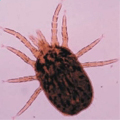@clothalto1
Profile
Registered: 11 months, 3 weeks ago
Check Out What Adhd Symptoms In Women Test Tricks Celebs Are Using Adult Female ADHD Symptoms If women suffer from ADHD symptoms, it is typically inattention, not overactivity and impulsivity. In some instances however, the signs can be quite different. This article offers information on what women with ADHD symptoms are experiencing and what treatment options are available. Inattention is more prevalent than hyperactivity and impulsivity Attention deficit hyperactivity disorder (ADHD) which is manifested by impairments in social and academic functioning, is a form of attention deficit hyperactivity disorder. However, these disorders have also been reported to present differently in women. ADHD females tend to be more quiet and less disruptive than their male counterparts. They may also have difficulties controlling their impulses. In the United States, approximately three to five percent of school-aged children are diagnosed with ADHD. Symptoms usually begin in childhood, but they may persist throughout adulthood. ADHD is a condition that should be treated with medication if it is identified. Girls and boys alike should be assessed. Treatment should include psychoeducation regarding the benefits of medications, and also information about self-management. A number of studies have shown that inattention symptoms are more prevalent among females than hyperactive or impulse-related symptoms. This suggests that the two conditions have more in common than an average ADHD patient is aware of. This is especially true for ADHD patients who are young. Adults who are not attentive to their symptoms are more likely to suffer with them throughout adulthood. This is supported by the fact that the percentage of adults who meet diagnostic criteria continues to decline in clinical samples. These symptoms can be replaced with internal anxiety. The Nadeau-Quinn checklists can be used to determine the possibility of ADHD in girls. These checklists provide an organized set of questions to help you self-research and provide the symptoms of ADHD. Inattention is perhaps the most evident symptom of ADHD. For instance, it's easier to concentrate on a task if you have inattentive symptoms than with hyperactive ones. Girls who suffer from ADHD may also have issues with settling interpersonal conflicts. They are also more likely than others to smoke cigarettes. Certain studies have found that ADHD females are more likely to be successful with medications than other women. Although inattention is more common and more common, the core symptoms of ADHD can lead to significant functional impairment. Additionally, ADHD is a neurological disorder that results from damage to the frontal lobes. As people age, they develop impaired executive functioning and task switching abilities, which affect self-regulation. Typical symptoms of ADHD include difficulty paying attention, excessive talk and fidgeting, as well as the inability to remain still. ADHD children tend to have difficulties with socializing, friendships and schoolwork. Gender stereotypes also influence ADHD presentation. ADHD is more common for boys than girls. This is because ADHD is a disorder that affects males and females with an incidence ratio of 4:1. If a female is sent to an institution to be evaluated, the selection is typically made based on the first degree relative. A lot of times, reports from schools don't accurately reflect the gender of females. There is some evidence that symptoms of ADHD could be due to damage to the basal ganglia. Hyperactive symptoms also tend to decrease with the advancing years. Women tend to show ADHD symptoms in a more complex manner The way women show ADHD symptoms differs from the way in which men do. They might not be diagnosed. The risk of misdiagnosis is serious because it can result in more complications. An incorrect diagnosis can lead to an adult woman not attending important medical appointments. It could also result in other health problems like substance abuse. Gender-based stereotypes and biases can influence the way ADHD is perceived by women. This is because females have a distinct set of symptoms and behavior. In some cases this may be a result of hormonal fluctuations. ADHD symptoms can be exacerbated by hormonal changes. Women may experience more severe symptoms of emotional dysregulation than males. This can lead to anxiety and low self-esteem. Females also have a harder time concentration, which can affect with academic performance. Women often have trouble staying focused and organized, and these issues can impact relationships with family and friends members. They might also have difficulties fulfilling social expectations. Girls could have more anxiety and depression, and they are more likely to be sexually active. Women are expected to be organized and responsible parents. However, women who have ADHD often struggle with these tasks. These women might feel frustrated and feel less confident when they are unable to meet their expectations. If left undiagnosed women can resort to compensatory behaviorsthat can disguise the impact of their impairments. Another issue that can complicate the ADHD presentation for women is referral bias. This is a tendency amongst doctors and teachers to see ADHD as"a disruptive boy". This can result in delays in referrals and treatment. Additionally, gender-based biases within parents can hinder the process of referral and treatment. ADHD can cause problems with attention among children. Other symptoms are more difficult to identify, including hyperactivity. ADHD is a rare disorder that can affect people of all different ages and genders. The symptoms of ADHD differ from day-to-day and may persist into adulthood. Many factors can affect the gender-based nature of ADHD symptoms, such as hormones and gender-based expectations. However, a better understanding of the differences between male and female ADHD can aid in improving functional outcomes. ADHD diagnosis can be influenced by gender-based parental biases. ADHD is more prevalent for girls than boys. They also have higher expectations about their child's behavior. Many women suffering from ADHD tend to suppress disruptive behavior for example, lack of organization skills and indecisiveness. ADHD can affect women of all age and genders. It is a common condition that is often wrongly diagnosed. If it isn't properly diagnosed, women may struggle with inattention, focusing issues, and anxiety. These symptoms can contribute to a variety of health problems including compulsive eating, stress, and substance abuse. Treatment plans for women suffering from ADHD Females suffering from ADHD typically have a more complex clinical picture than males. This presents a challenge in both diagnostic assessment and effective treatment. Treatment strategies should be adapted to the needs of the individual. Psychoeducation about the condition and its symptoms should be included. In addition, medication should be administered in a sexually sensitive way. The aim is to achieve an immediate response. Social stigmatization, as well as problems with social interaction are more prevalent in ADHD girls and women. These factors increase the possibility of comorbid disorders. Common co-occurring disorders among women and girls with ADHD are eating disorders anxiety, mood, and eating disorders. ADHD women are more likely to engage in self-harming behaviors. Lack of motivation could also be a reason. Studies have found a link between inattention and low performance in education. However these findings must be taken with caution. While the treatment of pharmacological nature should not be different for men and women, ADHD patients with girls can be affected by emotional vulnerability. Because of this, dysfunctional coping strategies can arise. They could mask the stress or trigger self-harming behavior. Girls with ADHD usually exhibit a lack of motivation and inattention. This can impact their interpersonal relationships and cause them to feel disregarded by their peers. ADHD sufferers may also experience problems settling interpersonal disputes. Women and girls who suffer from ADHD are at a higher chance of being abused sexually. They are also more likely to contract STDs. It has been suggested that the beginning of sexual activity occurs earlier in young people with ADHD than other children. There is also an increase in early pregnancy rates. ADHD young children frequently drop out of school due to a variety of reasons. Other reasons could be related to occupational and social issues. Adult females with ADHD might have difficulties balancing their work and personal lives. Multitasking and work demands can be exacerbated by responsibilities at the home. The majority of females with ADHD are more likely to live in temporary homes or poorly paid employment. As a child, ADHD may be more severe and present with exhibitionism and sexual exploitation. Treatment for women suffering from ADHD symptoms should be focused on the individual's requirements and their life span. Cognitive treatment for behavioural disorders (CBT), along with psychoeducation, is a good option to use in treatment. Psychoeducation should be geared towards the patient's self-management needs. It is important to ensure the compliance of the prescribed medication. Women who have not been diagnosed with ADHD might also require additional services like childcare assistance. Despite the rise in diagnosis of women with ADHD, there is a need for better treatment. For instance there aren't many comprehensive neuropsychological tests to assess ADHD. Therefore, patients are generally assessed through a clinical interview or rating scales. These measures may not be suitable for monitoring treatment changes. These comorbidities and core ADHD symptoms should be addressed. adhd symptoms explained , for instance can aid in reducing irritability, moodiness, and inattention. A stimulant that is long-acting could increase the adherence.
Website: https://www.iampsychiatry.uk/adhd-symptoms-in-adults/
Forums
Topics Started: 0
Replies Created: 0
Forum Role: Participant




